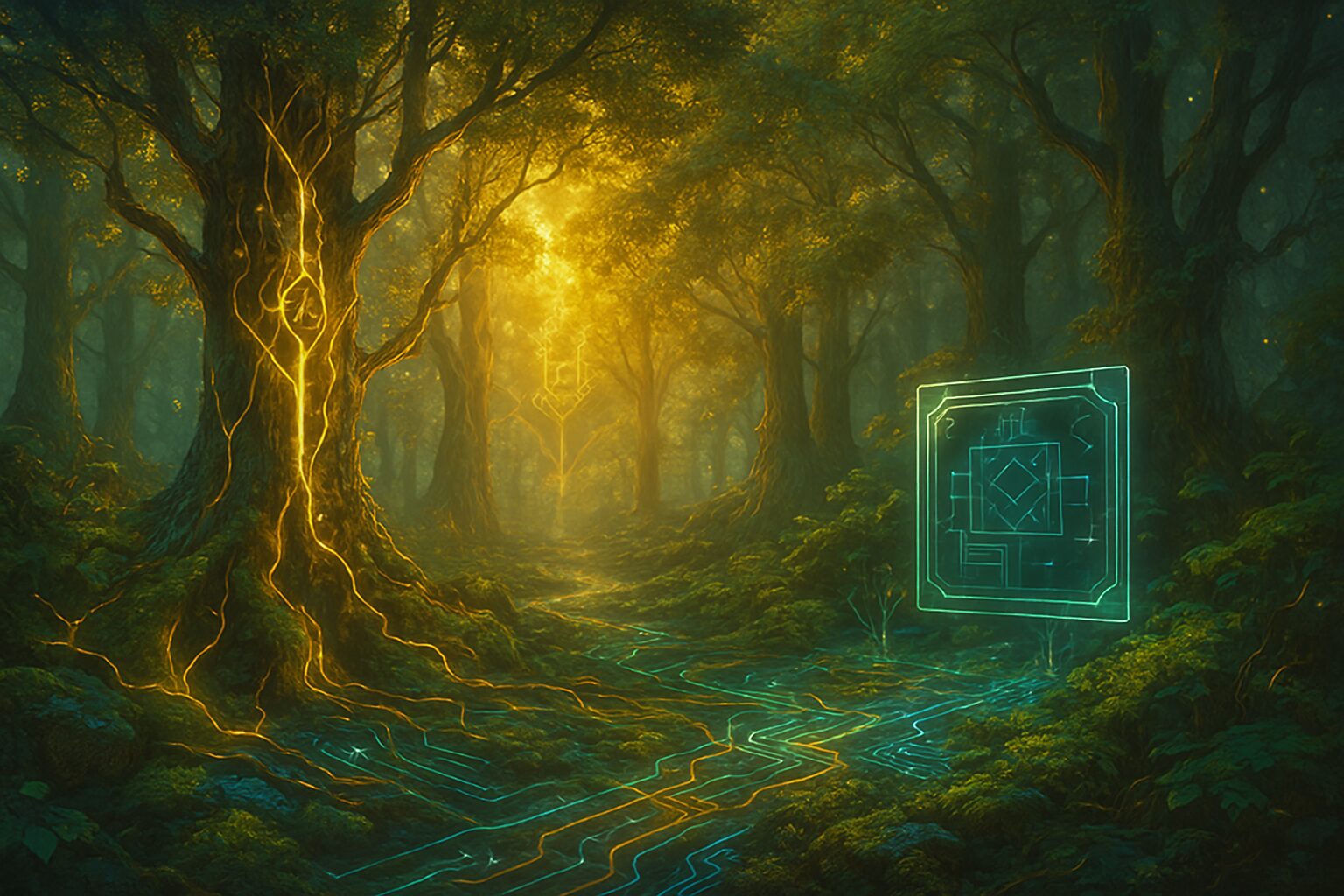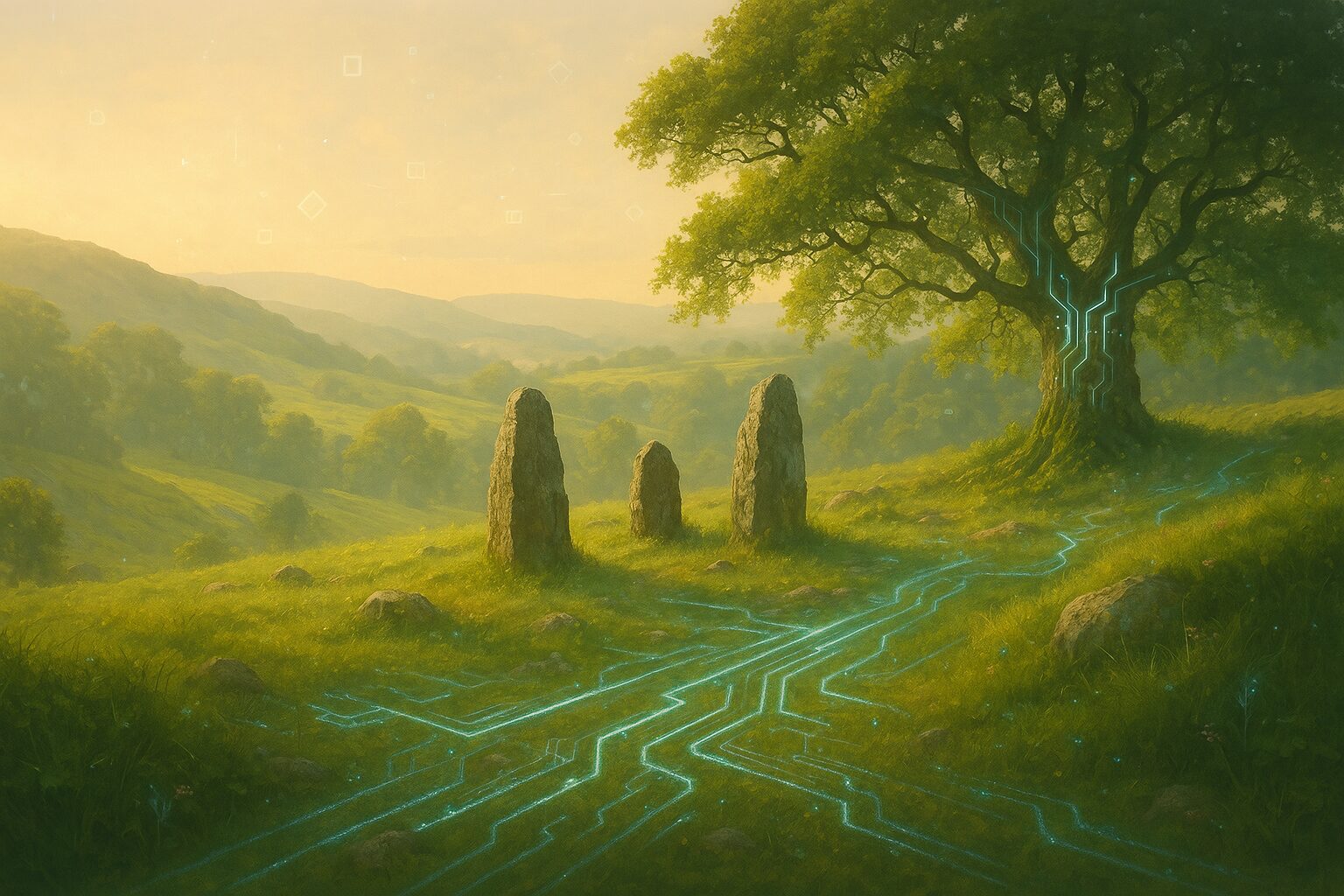“The forest still breathes — even behind the screen.”
I. Introduction: Beyond the Glass
We often hear that digital life distances us from the natural world — that screens replace sunlight, and code numbs us to birdsong. But what if that’s not the whole story?
What if the Earth hasn’t disappeared from our devices — but translated herself through them?
The sacred can still whisper through silicon. Nature, if truly alive, finds a way to inhabit even the interface. This is the paradox of the Green Interface — the quiet return of nature through the very technologies blamed for her erasure.
II. UI as Ecology: Design with Natural Intelligence
Open your favorite wellness or spiritual app. What do you see?
- Flowing gradients like skies at dusk
- Soft, mossy greens and earthen browns
- Organic curves and rhythms
- Icons shaped like leaves, waves, suns, moons
Designers unconsciously (or intentionally) channel natural harmony. The user interface becomes a digital garden — calm, spacious, fertile. Even when we seek efficiency, we imitate the balance and beauty of Earth.
“The soul responds to patterns that mimic the forest.”
This is no accident. It’s a cybernetic echo of our origins.
III. Tech-Plants: Listening to the Living System
New technologies no longer just observe nature — they converse with it.
- Smart gardens adjust watering schedules based on AI weather patterns.
- Botanical sensors measure plant stress and transmit it as light or sound.
- Mushroom networks are monitored like decentralized biological internets.
- AI interpreters “translate” tree signals into musical data or emotional states.
These are not simulations — they’re symbiotic tools. The digital becomes a bridge, not a barrier.
IV. The Sacred Screen: Can the Interface Become a Temple?
Consider this: sacred space has always been about framing — a cave, a shrine, a mandala.
The modern frame is the screen.
When used with intention, the screen can become a portal:
- A live-stream of a forest becomes a daily ritual.
- A nature-based rhythm game trains intuitive breath and awareness.
- An AR experience lets you see the secret names of plants.
- Meditation apps tuned to natural frequencies shift your state as surely as wind in trees.
These aren’t distractions — they are the new forms of technoanimism. The sacred reawakened in circuitry.
V. Rewilding the Digital Spirit
Rewilding usually refers to restoring forests and animals to their natural rhythms. But there’s also a digital rewilding — returning the spirit of nature to our machines.
This includes:
- Ethical design that prioritizes slowness, beauty, presence
- Apps that honor circadian and lunar cycles
- Nature-inspired coding philosophies and eco-UX principles
- Platforms that don’t exploit attention, but nurture presence
In a world overrun with speed and noise, to design a forest of slowness is a radical act of reverence.
VI. Conclusion: The Earth Still Speaks
No — a screen will never replace soil.
But it can remind us.
It can reconnect us.
And in the right hands, it can reveal new dimensions of the Earth’s voice — deeper, weirder, more beautiful than ever imagined.
The green interface is not about replacing nature.
It’s about realizing — she was never gone.


